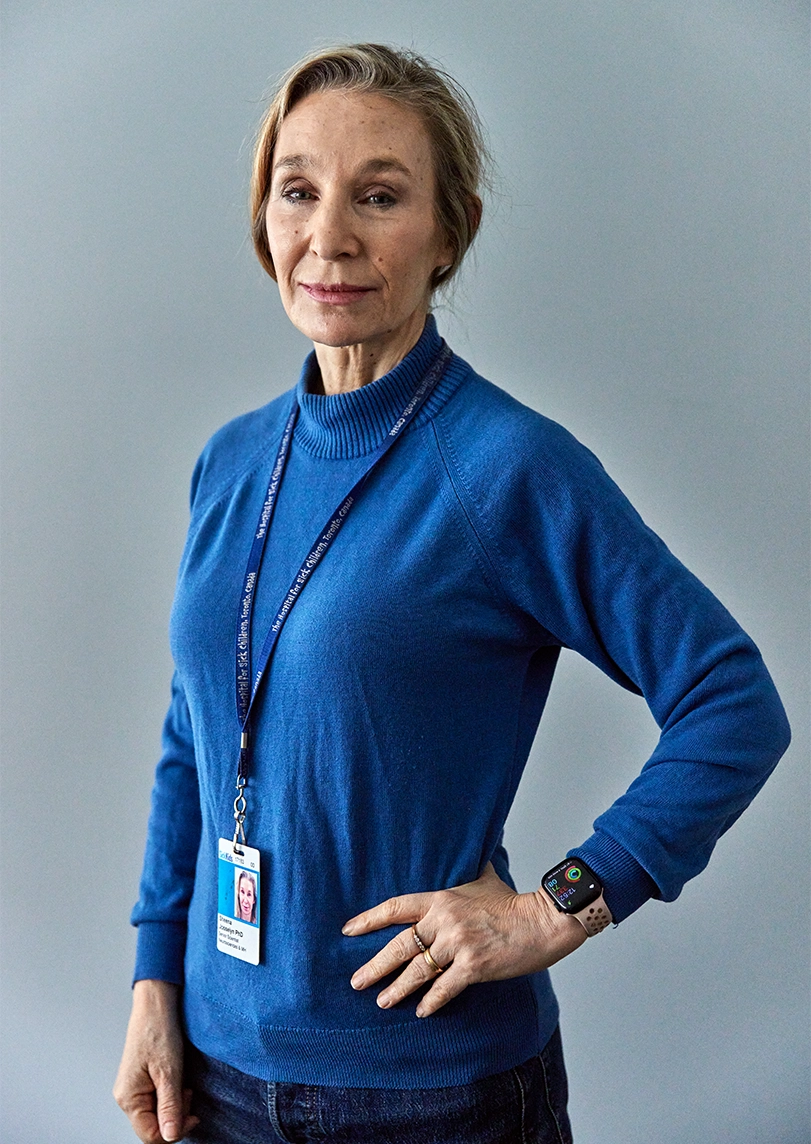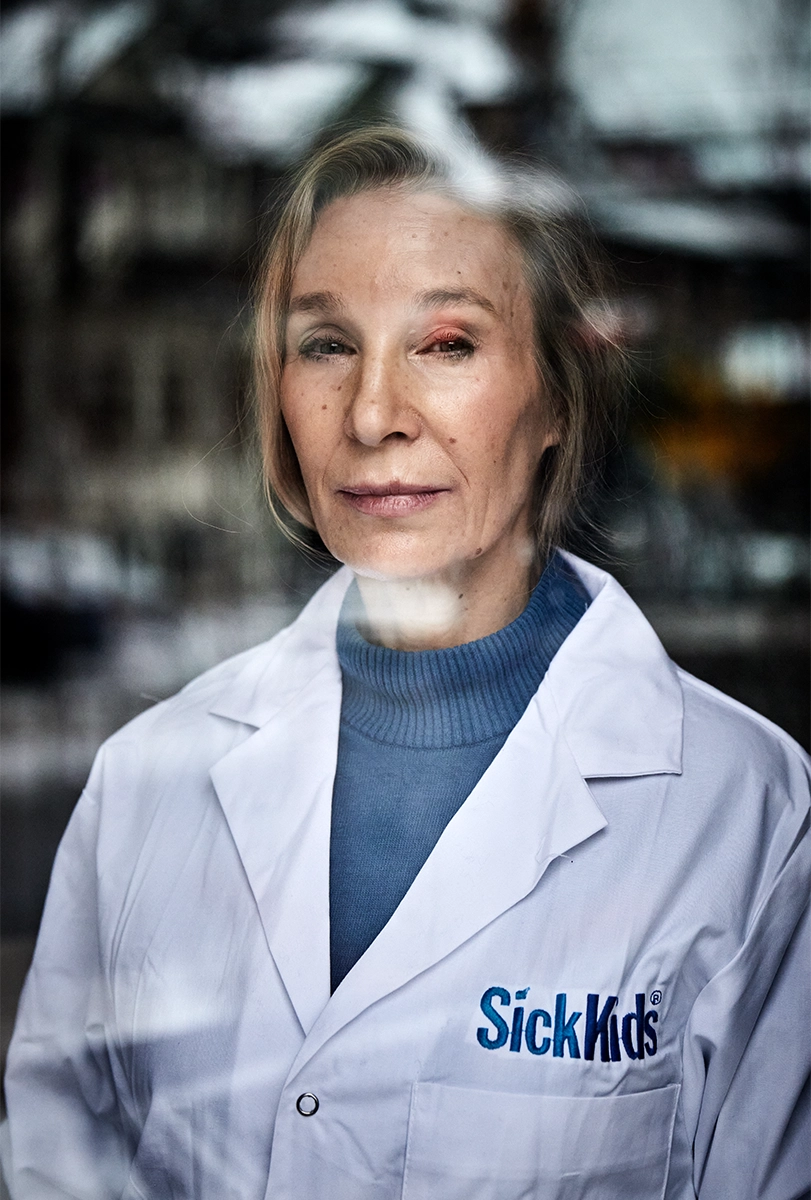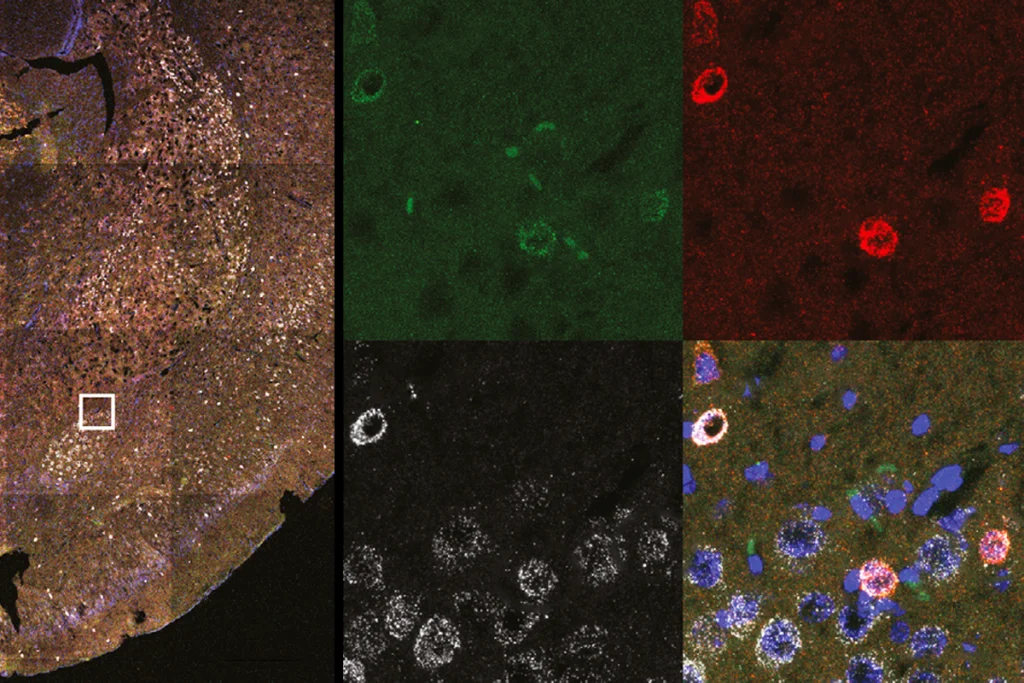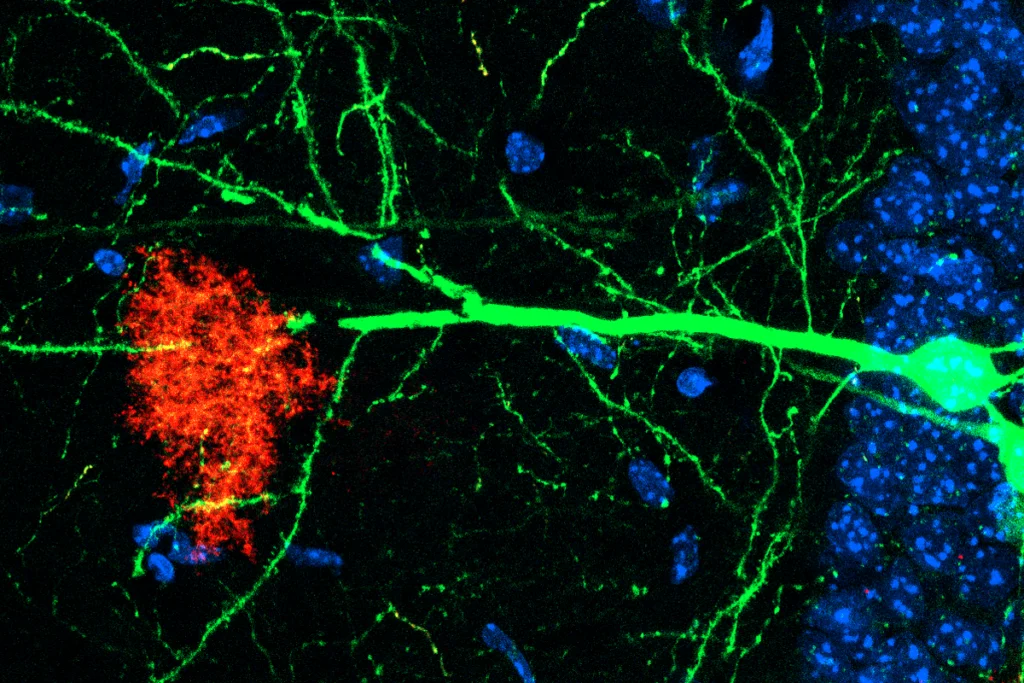Here’s a little-known fact about Sheena Josselyn: She once danced with Madonna. It was May 1985 — during The Virgin Tour — and Josselyn, now professor of psychology and physiology at the University of Toronto, was a college student. Her brain held all of Madonna’s lyrics, and she channeled Madonna’s style with spiky orange hair and fishnet stockings. She also loved, in her words, Madonna’s “take-no-prisoners, fuck-you attitude.”
Thanks to a friend of a friend with a roadie connection, Josselyn found herself backstage after the Toronto performance. When Madonna emerged into the hallway, Josselyn, who took a lot of dance classes back then, asked her for help with a move she had been struggling with. “It was just a barrel roll — super easy,” she says. Madonna paused for a beat and then turned and showed her what she was doing wrong. “I was struck by how short she was and how small she was,” recalls Josselyn, but what also imprinted in her mind was Madonna’s kindness. “She was really, really nice to me,” she says. “She didn’t have to stop.”
This memory lives in Josselyn’s head, and recalling it still makes her laugh. That’s one of the things our memories do for us — they bring color to our lives, braiding our past and our present. They are evoked intentionally or recalled inadvertently upon encountering a smell, a song, a feeling or a place, and they catapult us back in time.
Memory is a topic Josselyn has thought about endlessly over her 25-plus-year career. As a postdoctoral researcher, she began pursuing how memory’s physiological imprints — called engrams — form in the brains of mice, and since then, she has found sophisticated tools to study how the brain turns experiences into recollections. “It’s a fundamental part of our humanity,” she says — and learning to manipulate how memories are encoded could yield much-needed therapies for escaping the fetters of painful memories that are at the root of some psychological maladies, or holding onto ones that are slipping away, in the case of dementia.
J
osselyn was born outside Cleveland, Ohio, but she considers Kingston, in Ontario, Canada, her second hometown. Her father was a naval architect, and his work moved the family from Glasgow, Scotland, where he went to university, to Quebec City, Bordeaux and Hamburg before landing them in Cleveland. Josselyn never knew him — he died just a few months after she was born. Her mother was Canadian, though, and she moved the family to Kingston when Josselyn was in high school.Josselyn excelled at science — she liked a challenge — and she liked solving puzzles and mysteries. She told anyone who asked that she planned to be a pediatrician. But after a summer stint as a receptionist at her family doctor’s office, where she got a first-row seat to a steady stream of sniffles and tummy aches, she realized doctoring wasn’t for her.
It wasn’t until Josselyn stumbled onto the concept of engrams in a college psychology course that she began to get a sense of her direction. A German zoologist-turned-philosopher named Richard Semon coined the term in 1904, but it was Karl Lashley, a neuropsychologist at Harvard University, who put engrams on the map. In the first half of the 20th century, he fervently searched for them in the brains of rats, conducting experiments that involved teaching the animals a particular task and then excising distinct areas of their cerebral cortex to see if they could still perform it afterward. After more than three decades, in an article published in 1950 titled “In Search of the Engram,” Lashley finally called it quits. There were no engrams to be found, he wrote, concluding instead that brain tissue is equipotent, with its functions distributed throughout.
Lashley’s quest got a paragraph or two in Josselyn’s college textbook and a brief mention in a class lecture. “They taught it as this old-fashioned concept that people don’t really think of anymore,” Josselyn says, but it got her hooked on psychology.
She decided to get a Ph.D. and studied psychology at the University of Toronto. But it was in her postdoc in Michael Davis’ lab at Yale University that Josselyn began investigating memory in earnest. Davis and others were trying to block fear memories in rodents, but Josselyn wondered whether she could instead enhance them by turning up the dial on a transcription factor called CREB, which had been linked to learning and memory in sea slugs, fruit flies and rodents.
What spurred the idea was a hot new technique developed in a neighboring lab. That team had managed to overexpress CREB on command using a transgene delivered by a herpes viral vector. After hearing about their work, Josselyn “bounded across the hall” and asked to collaborate, she says.
Her idea worked: In rats that were trained to associate a light with an unpleasant stimulus, that extra shot of CREB delivered into their amygdala magnified their fear response.
The experiment caught the attention of Alcino Silva, who was studying the molecular components of memory at Cold Spring Harbor Laboratory. (Josselyn’s then-boyfriend — now her husband — Paul Frankland was in Silva’s lab as a postdoc.) “Frankly, I was very impressed and a little jealous of these findings,” says Silva, who is now at the University of California, Los Angeles. He had discovered CREB’s link to memory in rodents, but he hadn’t imagined that a one-step maneuver could so powerfully affect memory in a complex mammalian brain.
Yet a big mystery lingered: Although the effect on the rats’ behavior was dramatic, they had enhanced CREB levels in only about 10 to 15 percent of neurons in a key part of the amygdala. “We were sort of deflated,” Josselyn says. “Like, how could this possibly be that we were disrupting such a small number of cells?”
Davis, Silva and Josselyn dug into the problem. The size of the memory enhancement was so large that the trio figured there must be some explanation for why the brain stores information this way. Perhaps the extra CREB somehow primed just the neurons that took up the transgene to encode the memory, they hypothesized. Maybe this was the molecular basis for the elusive engram.
To test this, they needed another hot new tool — and they found one in immediate-early genes (IEGs), which ramp up their expression shortly after a neuron is activated and then quickly cool back down to baseline. In mice that had received the CREB-enhancing transgene, Josselyn and her colleagues tracked the expression of an IEG called ARC about five minutes after the mice underwent a memory test. In that way, they could match responses to the fear memory with levels of CREB expression and the activity in specific neurons.
Josselyn asked to join Silva’s lab, which was relocating to Los Angeles. She and Frankland moved with it, and she began the IEG work as part of a second postdoc. After she and Frankland both landed jobs at the University of Toronto in 2005, she brought the project with her.
“I’ll never forget when we first looked over the data,” says Steven Kushner, at the time a postdoc in her lab. “Sheena and Paul and I were standing at the whiteboard, and we stepped back and said, ‘Holy shit, this all makes sense.’” They seemed to be catching a glimpse of a real-time competitive mechanism in which the neurons with the ramped up CREB expression were primed to jump into an engram. They had found what they were looking for.

S
ome memory researchers balk at the word engram. They call the term outdated and historically loaded, preferring instead something more neutral, such as “memory trace.” But Josselyn embraces the history and the word itself, and she has strived to resurrect it.Josselyn and Silva’s 2007 paper didn’t quite do it, though. It turned heads, but it fell short of convincing many in the field that the CREB-activated neurons were actually forming engrams. One obvious way to prove it was to wipe out a specific, already-formed memory while leaving everything else in the brain pristinely intact. The team began searching for yet another molecular tool — “the most targeted silver bullet” that on command could kill only the neurons recruited to encode that memory, says Kushner, who is now professor of psychiatry at Columbia University.
Josselyn devoted all her nascent lab’s funding to this project. If it failed, or if another lab beat her to it, she would be sunk. She worried that maybe her ideas were wrong; she worried over staffing and money; and she was pregnant — no matter what, her life was going to change.
The stakes felt terrifyingly high, but the work was exhilarating, Josselyn says. The 2000 Nobel Prize had gone to three scientists studying the molecular mechanisms underlying memory, and neuroscience was abuzz about the topic. “There was a sense that something important is here somewhere, and whoever figures it out was going to get rewarded,” Kushner says.
Josselyn’s tiny team mulled over published results and dreamed up possible experiments. It was Kushner who found the silver-bullet technology. He proposed injecting into the amygdala a virus carrying a receptor that’s susceptible to diphtheria toxin. “From the very first experiment, it worked,” says Jin-Hee Han, a neuroscientist at Korea Advanced Institute of Science & Technology, who was Josselyn’s postdoc and the study’s first author. After experiencing a neutral sound paired with an unpleasant stimulus — in this case, a shock — the mice showed fear in response to the sound; but after the toxin injection killed the cells, the mice were no longer afraid, suggesting that they were again experiencing the sound as neutral. The work was the first proof of principle that it was possible to reach into the brain and tinker with memories via their cellular correlates.
Josselyn gave birth to her daughter the night before the study’s publication. She was far past her due date, and her doctor had decided to induce her. Han didn’t feel comfortable talking to the media, so Josselyn and Frankland typed out replies to reporters’ questions in the birthing room while medical staff monitored her contractions. Finally, she was whisked off for an emergency cesarean section as the anesthesiologist, trying to make soothing conversation, asked her what she did for work. “I have a Science paper coming out tomorrow,” she told him. He asked her what it was about, and she said, “It’s all about memory!”

T
hose two Science papers kicked off a new phase of memory research in which fine-grained molecular tools could reveal focused insights about psychology. “This was the launching pad,” says Steve Ramirez, assistant professor of psychological and brain sciences at Boston University. A few years later, Ramirez, while a graduate student in Susumu Tonegawa’s lab at the Massachusetts Institute of Technology, helped pull off a feat with an even stronger sci-fi feel — creating a false memory in the brain of a mouse. Other neuroscientists jumped in, too, as techniques such as optogenetics made it possible to turn neural circuits on and off with unprecedented precision.Since then, Josselyn’s lab has been tinkering on, working to parse out the subtle details of how neurons compete to join an engram, how engrams’ encoding affects memory retrieval, and what kinds of memories engrams can encode. She and her team have also probed engrams’ time dimensions — how long after an event they emerge, how stable they are over time, and how multiple engrams might interact with each other during their lifespans.
Over the years, “[Josselyn] was one of the few people who did an amazing job of using the most cutting-edge tools to answer really basic fundamental questions based upon psychological constructs,” says Denise Cai, associate professor of neuroscience at the Icahn School of Medicine at Mount Sinai.
Yet much territory remains uncharted. For one thing, researchers don’t know what actual information the brain is encoding when an engram forms, and there’s no coherent picture for how the system comes together. Recent studies hint that a memory’s physiological imprint spans multiple brain areas, but the details are a mystery.
Because most research on engrams is done in rodents, it’s impossible to say definitively that the sort of memory encoding Josselyn and others have observed also takes place in people. The basic underlying principles will turn out to be similar, Josselyn wagers. Electrical recordings from the brains of people undergoing memory tests to prepare for epilepsy surgery hint that they are encoding engrams, she points out, but it will take time — and more advanced tools — to know for sure.
It’s only a matter of time before all these discoveries in rodents point the way to methods for manipulating memories in people, Josselyn says. “Maybe we could delay someone’s memory loss using some of these techniques.”
On a wall in her office, next to a couple of slightly off-kilter award plaques, hangs a larger, straighter item: her father’s framed diploma from the University of Glasgow. Her family’s stories cast him as something of an iconoclast who loved a good practical joke. Although he was an English native, he strongly identified with the Scots — so much so, according to family lore, that while at university in 1950, he helped four Scottish students perform a daring and famous act: repatriating the Stone of Destiny, a piece of red sandstone used ceremonially in Scottish coronations, after they swiped it from Westminster Abbey.
When pressed, Josselyn entertains the possibility that her own lack of memories about her father somehow stirred her interest in how memories are formed. But she’s not convinced. Regardless, she says, experiencing her father through stories and photos over the years has congealed them into something that feels almost like true memories. Perhaps almost like an implanted engram? “Yes,” she says. “Exactly.”





